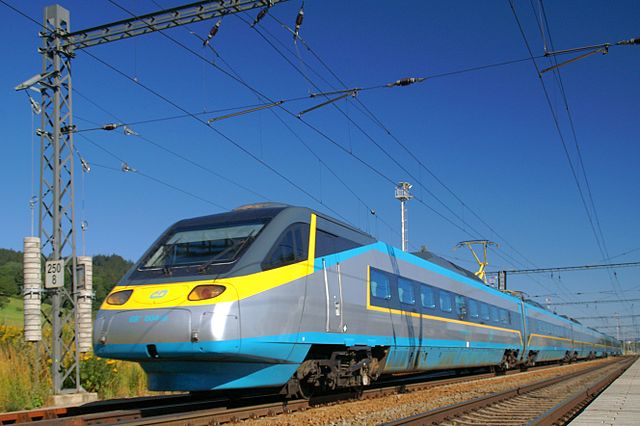The LRC is a series of lightweight diesel-powered passenger trains that were used on short- to medium-distance inter-city service in the Canadian Provinces of Ontario and Quebec.
LRC No. 6917 at Newtonville, Ontario.
An LRC passenger car.
CN Turbo in Toronto in 1975.
1977 Amtrak LRC Rendering
A tilting train is a train that has a mechanism enabling increased speed on regular rail tracks. As a train rounds a curve at speed, objects inside the train experience centrifugal force. This can cause packages to slide about or seated passengers to feel squashed by the outboard armrest, and standing passengers to lose their balance, or in such excessive speeds, could even cause the train to derail. Tilting trains are designed to counteract this by tilting the carriages towards the inside of the curve, thus compensating for the g-force. The train may be constructed such that inertial forces cause the tilting, or it may have a computer-controlled powered mechanism.
A Japanese KiHa 283 series tilting DMU, which can tilt up to 8° (6° in normal operation)
A ČD Class 680 Pendolino train in July 2006
A Swiss SBB RABDe 500 on the Hauenstein railway line in May 2007
An ICE T (DB class 411) leaves a curve, showing cars tilted to different degrees.








